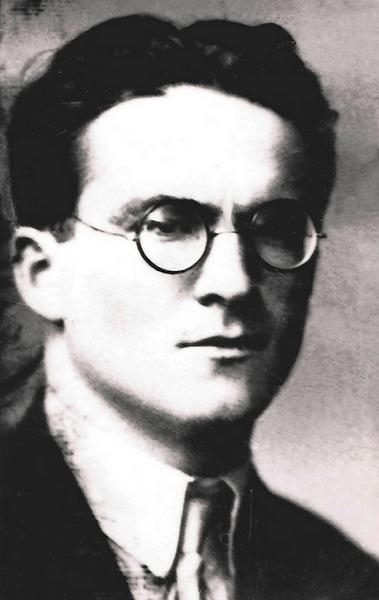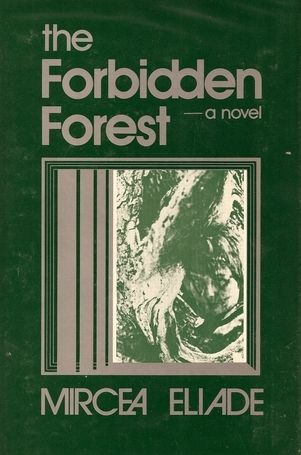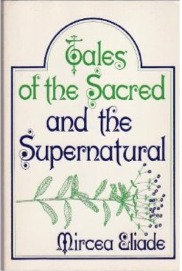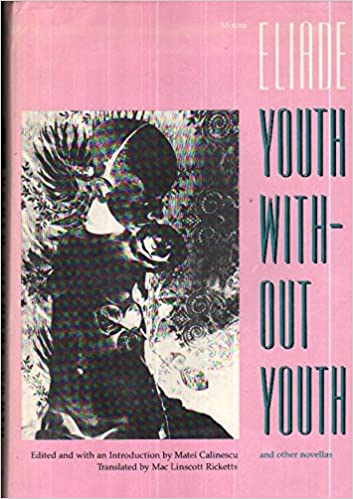 Mircea Eliade (1907-1986)
Mircea Eliade (1907-1986)
Eliade was a historian of (comparative) religion and the author of some of the most important works in the field. He studied at the University of Calcutta from 1928-1931, and from 1956-1986, Eliade was Professor of the History of Religion at the University of Chicago. Considered a “mainstream” writer who wrote science fiction and fantasy, Eliade, according to Cornel Robu, “extrapolates in a sciencefictional manner various hypotheses drawn from Indian doctrines and esoteric practices such as Yoga and Tantra.”

Two Tales of the Occult, translated by William Ames Coates (Herder and Herder, 1970).
(these two stories were also in a version of the collection called Two Strange Tales)
“Midnight at Serampore”
“time reversibility reduces individual lifespans to infinitesimal proportions as compared to the great time-intervals of supra-individuality.”
“The Secret of Dr. Honigberger”(1940)
A respectable Romanian physician vanishes without a trace after experimenting with yogic techniques in his quest for a legendary invisible world.
 The Forbidden Forest, translated by Mac L. Ricketts and Mary Park Stevenson (University of Notre Dame Press, 1978).
The Forbidden Forest, translated by Mac L. Ricketts and Mary Park Stevenson (University of Notre Dame Press, 1978).
Received the Fantastic and Fantasy Award for Best Novel at Eurocon 1978 in Brussels
“A man wishes to discover a sacred time which stands independently from the historical time and the destructive developments in [World War II] Europe.”
See “Reflections on profane and sacred time in the novel Forbidden Forest by Mircea Eliade” by Maria Holhos and Andra Gabriela Holhos, TricTrac: Journal of World Mythology and Folklore 9 (2016): 88-97.

Tales of the Sacred and Supernatural, translated by ? (Westminster Press, 1981).
Les Trois Grâces (also in Twelve)
“Les Trois Grâces” was written in Paris and appears in its first English translation in Twelve. According to Eliade (and noted by Robu), the author explores an idea he found in the “Apocrypha” of the Old Testament and transforms it into a mutant story. A scientist suspects that cancerous cells might actually hold the key to human rejuvenation, but when his lab is shut down by the government, he leaves three women trapped in a cycle of growing old in the fall and winter and then younger in the spring and summer.
With the Gypsies
An absentminded piano teacher happens to stop by a strange house one hot afternoon and is lured inside to see “the gypsies.” After a few hours of weird incidents and childish games, the piano teacher leaves the house only to discover that the entire town has changed. He’s then told that twelve years have passed since he first stepped into the gypsies’ house.

Youth Without Youth and Other Novellas, translated by Mac L. Ricketts (Ohio State University Press, 1988).
The University of Chicago Press edition (2007) has a foreword by Francis Ford Coppola, who made a film based on the title story
“Eliade explores the power electricity might offer to open a rift between our natural world and the threatening world of the supernatural or otherworldly. Struck by lightning on Easter night 1938 during a thunderstorm in Bucharest, a suicidal mediocre 70-year-old retired teacher (Dominic Matei), suffering memory loss caused by arteriosclerosis, is rushed to a hospital where he is expected to die of massive burns. Amazingly, however, a 30-year-old youthful body gradually begins to emerge from within Matei’s charred flesh, with Matei’s mind amplified to genius level and with other knowledge from an unknown source. Matei’s subsequent successive attempts to understand what the lightning did to him involve the Nazis, Romanian security police searching for right-wing Legionnaires, French doctors, theories of alien life forms, doubles, mythic time breaking into historic time, biological mutation, Dane’s Divine Comedy, the surfacing of deep consciousness, manifestations of erotic dreams, the transmigration of souls from India and Ireland, matter and antimatter in collision, nuclear-explosion effects, the Faust myth, and the interpenetration of sacred and profane time. Matei lives on, studying and learning in Geneva until 1966, when he is mysteriously informed that his expenses have been paid by a bank in Honduras. On January 8, 1968, he celebrates his 100th birthday and begins to age rapidly. In autumn, he receives a mysterious third rose, complementing two others he had received at the beginning of his regeneration. He returns to his home in Romania a few days before Christmas. Friends in a cafe recognize him and believe he has suffered amnesia. In the morning, his aged body is discovered frozen in too large clothes, bearing in his pocket a Swiss passport with the name Martin Hudicourt, born in Honduras, November 18, 1939.” – from Kleiner, “Romanian ‘Science Fantasy’ in the Cold War Era”
